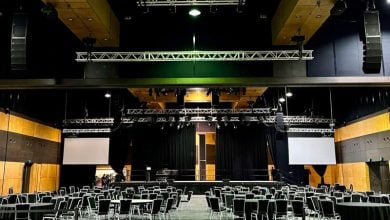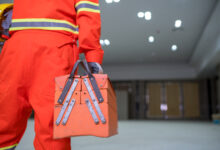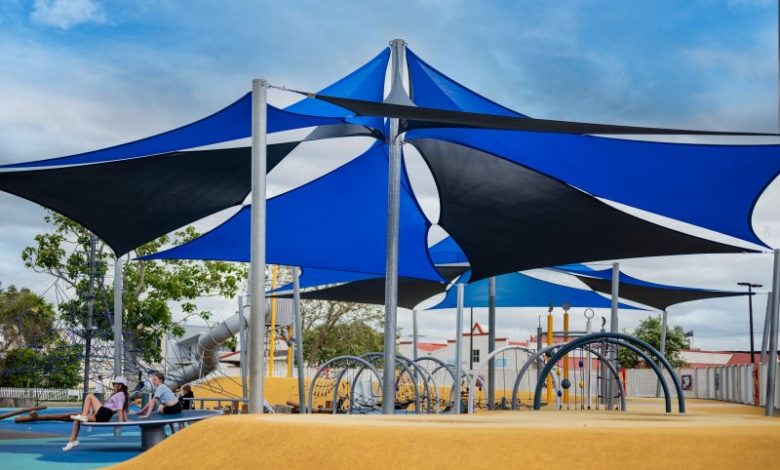
Here in Aotearoa New Zealand we love our outdoor spaces.
In schools especially, outdoor areas are valuable real estate, doubling as classrooms, lunch spaces, fitness areas, sports courts, and classroom corridors. Green spaces are essential infrastructure, just like other parts of school property like gymnasiums and science labs. But these outdoor spaces are subject to our often wet and windy conditions in winter, and our long, hot summer days. Adding shade and shelter can ensure their usability year-round.
Read the latest print edition of School News HERE
Fortunately, both aspects can be achieved with minimal cost and maximum effect, given proper planning. The space between classrooms, for instance, could be an ideal area to add an outdoor cover, as it may provide extensions of existing classroom space, making two classrooms multifunctional as one, two or even three learning areas. As a bonus, lunch-spaces are also extended ensuring students can get some fresh air between classes, especially on rainy days.
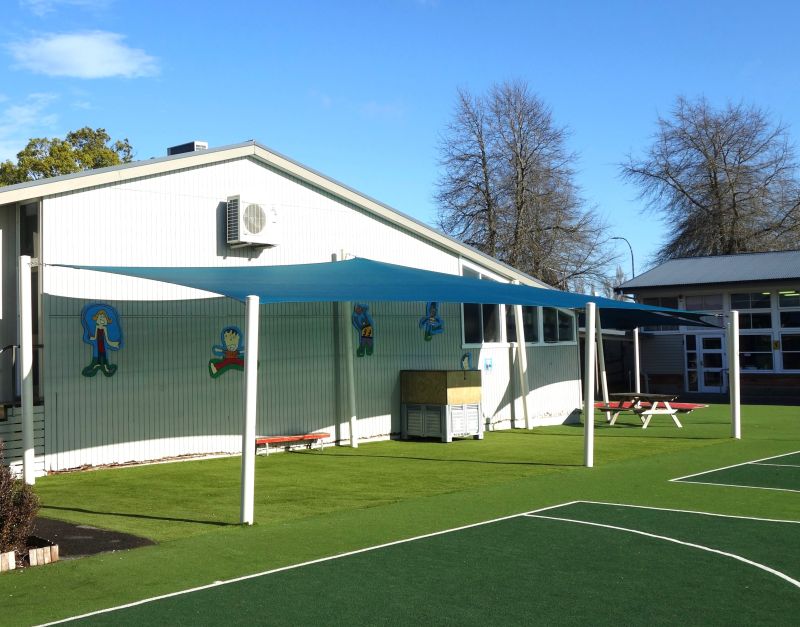
Another popular use of outdoor covers is to shade sports courts, so spectators and players alike can enjoy sports games in both rain and sun. This fulfils health and safety requirements and duty-of-care obligations for school boards, which are required to provide shade for students and staff.
Outdoor learning environments also have a myriad of benefits as evidenced by international studies. Being outdoors is linked to better mental health, stronger motor skills, creativity, and increased attention span. To ensure the most out of an outdoor learning area, it needs to be functional in many weather conditions and provide a safe environment.
When providing shade and shelter, especially for the purpose of an outdoor learning environment, schools should consider vital aspects such as the direction of wind, rain and sunshine. Materials used should also provide warm shade rather than cool shade to ensure the space is useable and meets health and safety requirements as set by the Ministry of Education. Available floor space, access to other vital facilities like drinking water and toilets should also be considered, as well as the need for amenities like electricity and lighting.
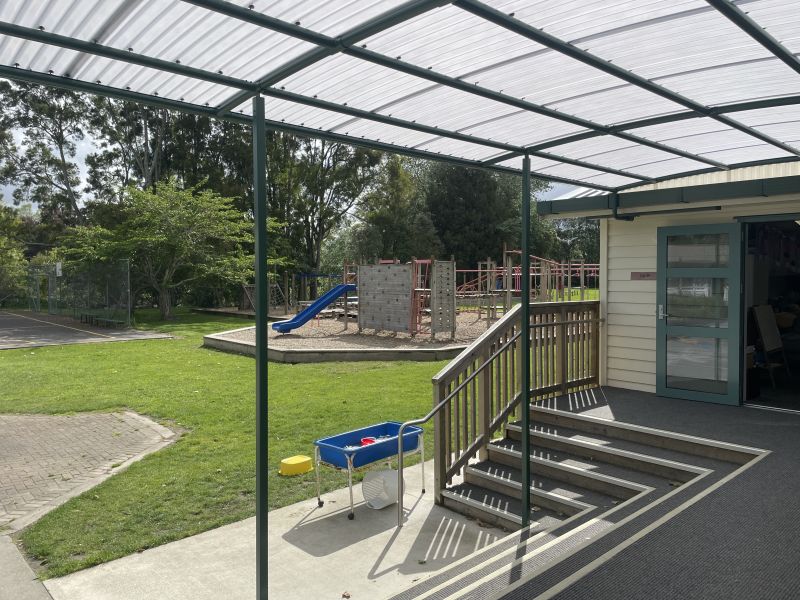
For more on specific considerations for New Zealand schools when designing outdoor spaces, School News spoke to some industry experts.
Evan Phillipson from Archgola Canterbury, and Paul Knight from Archgola South Auckland, shared their opinion regarding shade structures in schools.
Before investing in a shade structure, schools should consider the purpose of the covering – is it for shade and blocking UV rays, and /or shelter from rain; what is the maximum area that can be covered – for example increasing the size can provide greater protection from factors like driving rain; and think about the sustainability of the structure, such as whether it can be removed and reused if the location needs to change in the longer term.
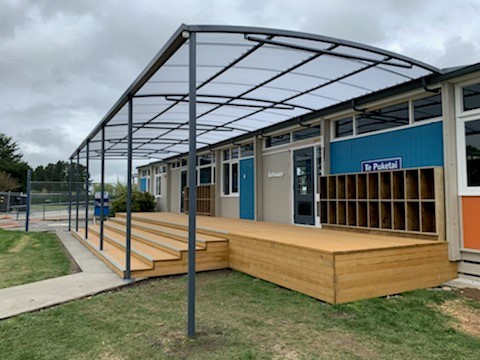
The best structure type, Phillipson and Knight said, will depend on the area to be covered and how the canopy will be attached to the building and ground. A straight flat canopy, for example, is best suited for shorter spans, such as a long narrow canopy across the front of a classroom block. Alternatively, arches allow wider spans between posts, so are more suitable for larger more open spaces.
The compliance of the structure is paramount, as trafficable roofing is required to meet standards, whilst still being transparent and aesthetically pleasing. The system needs to be engineer-designed to achieve consent. Phillipson and Knight stressed the need to engage a longstanding business, experienced with school installations, and with a good reputation for ongoing support, if required.
Derek Suckling from Shade Systems said that affordability will always be front of mind for schools installing shade structures, though these costs can be offset. “Don’t be put off by what may initially appear to be a big-ticket item, because with some creative planning it may be well within your grasp,” Mr Suckling said.
“With larger canopies, extra income can be earned by the school in hiring out a covered facility after hours. With a user-friendly sports surface underneath and lighting and PA systems overhead, there is so many uses for a large, covered area. Even councils or local bodies may be interested in assisting with funding for a world class facility that might not be available in the immediate locality.
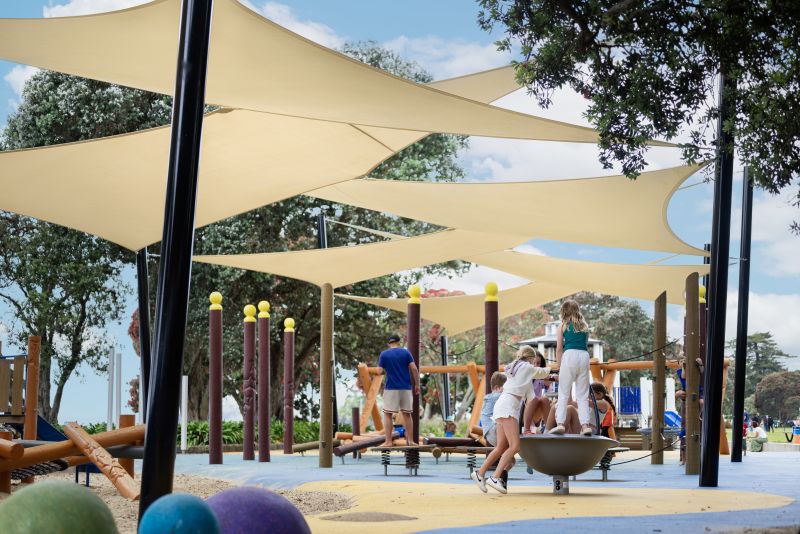
“Of course, there’s an old saying, horses for courses, well, the same with structures,” Mr Suckling said.
“Playgrounds are best covered with shade sails. Blanket coverage is not really necessary and it is in fact better to have a series of inter-connecting sails that the sunlight rotates through during the day, otherwise the play equipment tends to remain damp too long and become mouldy and dirty. As long as there is some shade, the children will naturally gravitate to it on the hottest days and be adequately protected.
“Courtyards and eating areas are much better being waterproof, and a canopy with curved rafters and a fabric membrane is the ultimate solution. These offer excellent light transmission properties, aesthetics and acoustics.”
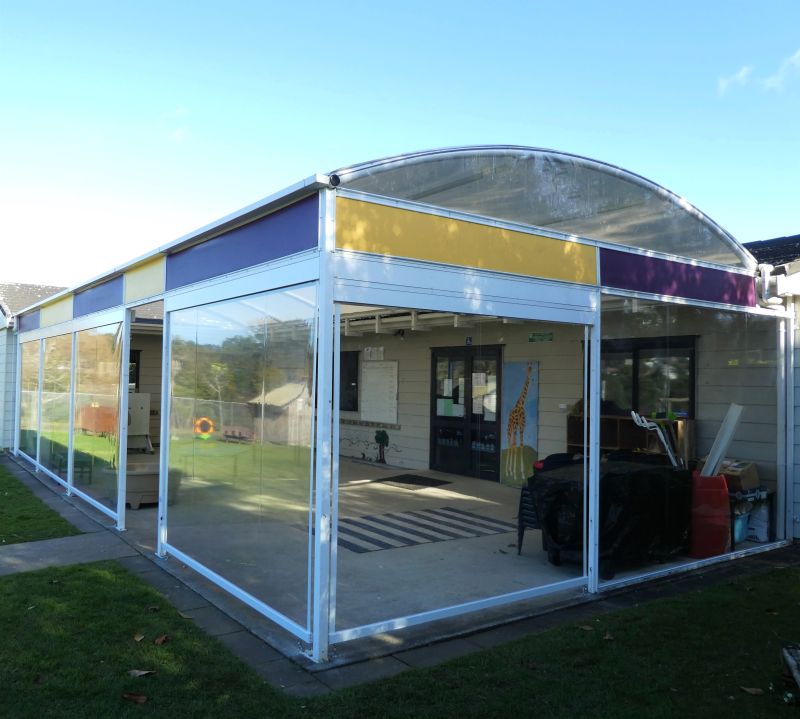
Every educational space is different, with varying layouts, dimensions, and design preferences. Alex Arutiunov from SunGuard said this makes custom-made shade sails a great option for schools. These can be crafted to fit your space perfectly, ensuring maximum coverage and protection without compromising on aesthetics.
“Design options are available to suit your needs, whether it’s standalone structures or combinations of multiple, interacting designs. This flexibility allows you to create a visually appealing outdoor environment that suits your educational setting.
“Look for a supplier that uses high quality materials in every aspect of the shade sail, including marine-grade stainless steel hardware and durable stitching thread to ensure they can withstand the harshest outdoor conditions, providing reliable protection for years to come.”
Pergolas and PVC blinds can enhance the functionality of an outdoor space, shielding students from wind and rain, while still allowing natural light to filter into the area. “Involve stakeholders in the decision-making process to ensure the structure meets the needs of the school community. Also ensure the structure is accessible to all, considering factors like pathway width and seating options.”
And Mr Arutiunov said shade structures are about more than just weatherproofing. “They enhance outdoor experiences, protecting students from the harsh New Zealand sun on sunny days and providing cosy retreats when the weather turns.
“Research shows that outdoor environments stimulate creativity, enhance problem-solving skills, and promote physical well-being. By extending outdoor opportunities throughout the year, schools can foster a love for exploration and discovery that lasts a lifetime.”





